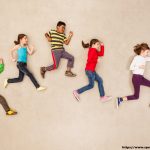In recent years, there has been a growing recognition of the importance of inclusivity in education, particularly when it comes to students with special needs. Inclusive education models aim to provide all students, regardless of their abilities or disabilities, with equal opportunities to learn, grow, and succeed together. These models strive to create inclusive and supportive learning environments that promote the academic, social, and emotional development of all students. Here are some inclusive education models that have shown promising results for special needs students:
1. Co-Teaching
Co-teaching is an inclusive education model that involves two teachers, a general education teacher and a special education teacher, working together in the same classroom. This model enables special needs students to learn alongside their peers in a regular education setting. The general education teacher provides instruction to the whole class, while the special education teacher offers additional support and accommodations to individual students as needed. Co-teaching fosters collaboration between teachers, promotes differentiated instruction, and creates an inclusive learning environment that benefits all students.
2. Universal Design for Learning (UDL)
Universal Design for Learning (UDL) is an inclusive education framework that aims to provide multiple means of representation, expression, and engagement to meet the diverse learning needs of all students. UDL encourages teachers to use varied instructional methods, materials, and assessments to ensure that every student can access and engage in the curriculum effectively. By offering flexible options and scaffolding supports, UDL empowers special needs students to participate fully in the learning process and achieve their academic goals.
3. Response to Intervention (RTI)
Response to Intervention (RTI) is an inclusive education approach that focuses on early identification and intervention for students who are struggling academically or behaviorally. Under the RTI model, students receive targeted support and interventions based on their individual needs. This multi-tiered system of support provides special needs students with additional instruction, interventions, and accommodations in the general education classroom. RTI aims to prevent academic and behavioral difficulties from becoming more severe and offers the necessary support for students to succeed in their learning.
4. Peer-Assisted Learning
Peer-assisted learning is an inclusive education model that promotes collaboration and peer support in the classroom. In this model, special needs students are paired with their typically developing peers who provide assistance and support in academic and social activities. Peer-assisted learning not only enhances the educational outcomes for special needs students but also fosters social inclusion, empathy, and friendship among all students. This model allows special needs students to learn from and with their peers, promoting a sense of belonging and reducing feelings of isolation.
5. Collaborative Team Teaching
Collaborative team teaching, also known as “collaboration station” or “coteaching,” involves a general education teacher and a special education teacher sharing the responsibility for instruction in the same classroom. Both teachers work together to plan, deliver, and assess the curriculum, ensuring that the needs of all students, including those with special needs, are met. Collaborative team teaching promotes a strengths-based approach, utilizes the expertise of both teachers, and encourages collaboration and mutual support among students. This model fosters a sense of community and inclusivity within the classroom.
Inclusive education models offer various pathways to ensure that special needs students receive a high-quality education in a supportive and inclusive environment. These models emphasize collaboration, individualized instruction, and a recognition of the unique strengths and needs of every student. By embracing inclusive education practices, schools can create environments that empower and celebrate the diversity of all their students, promoting academic success, social growth, and lifelong learning for everyone.











